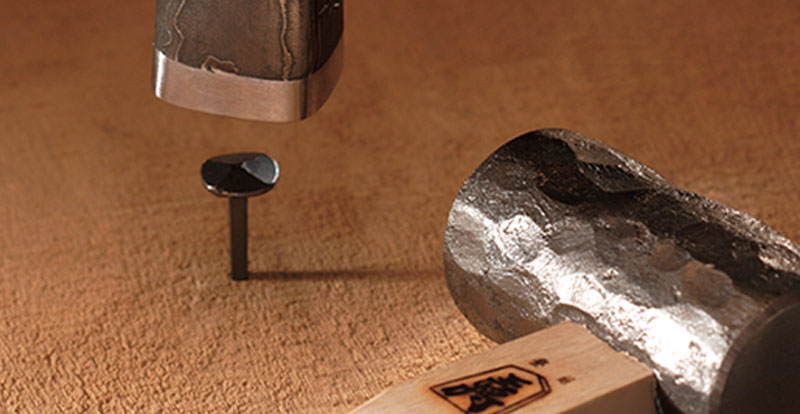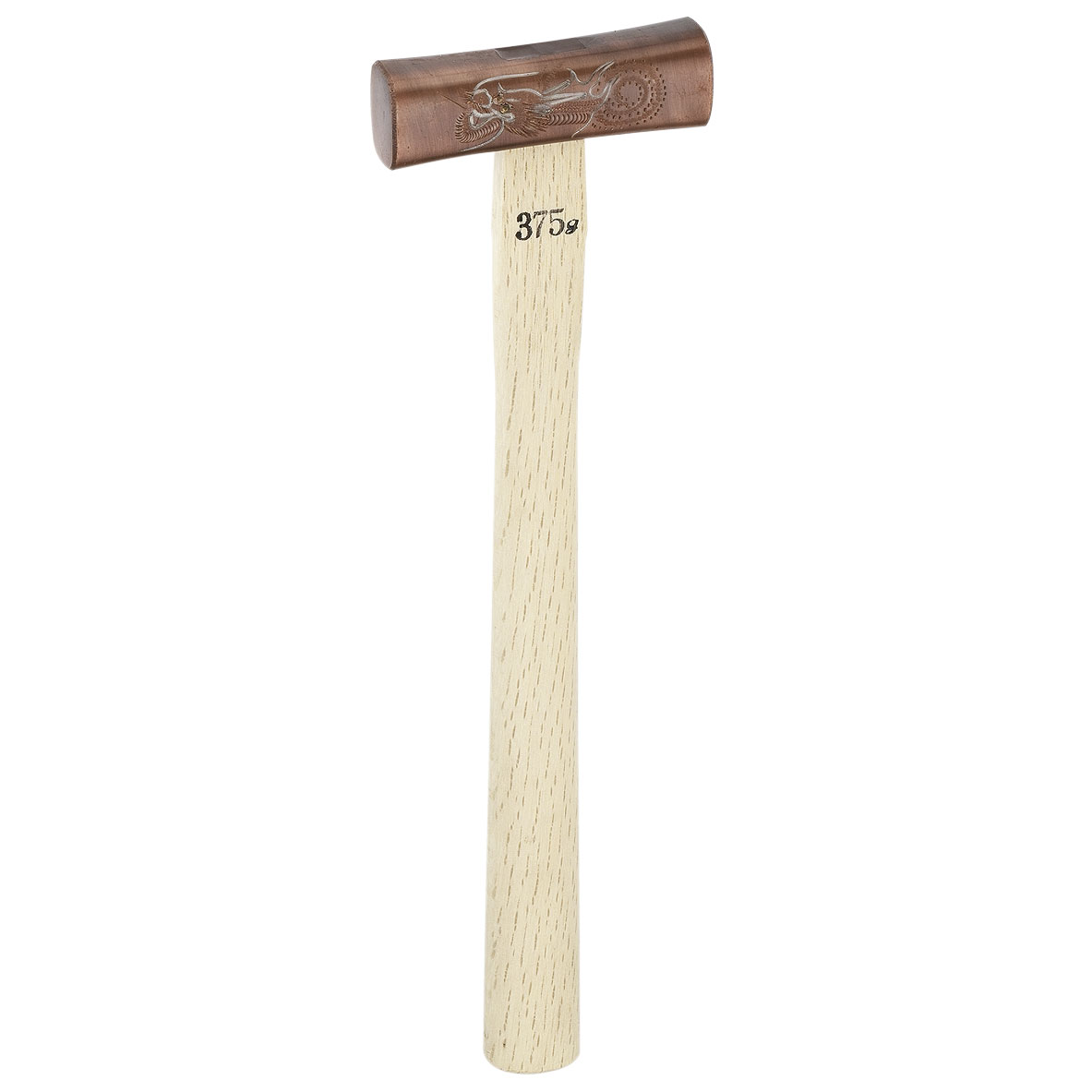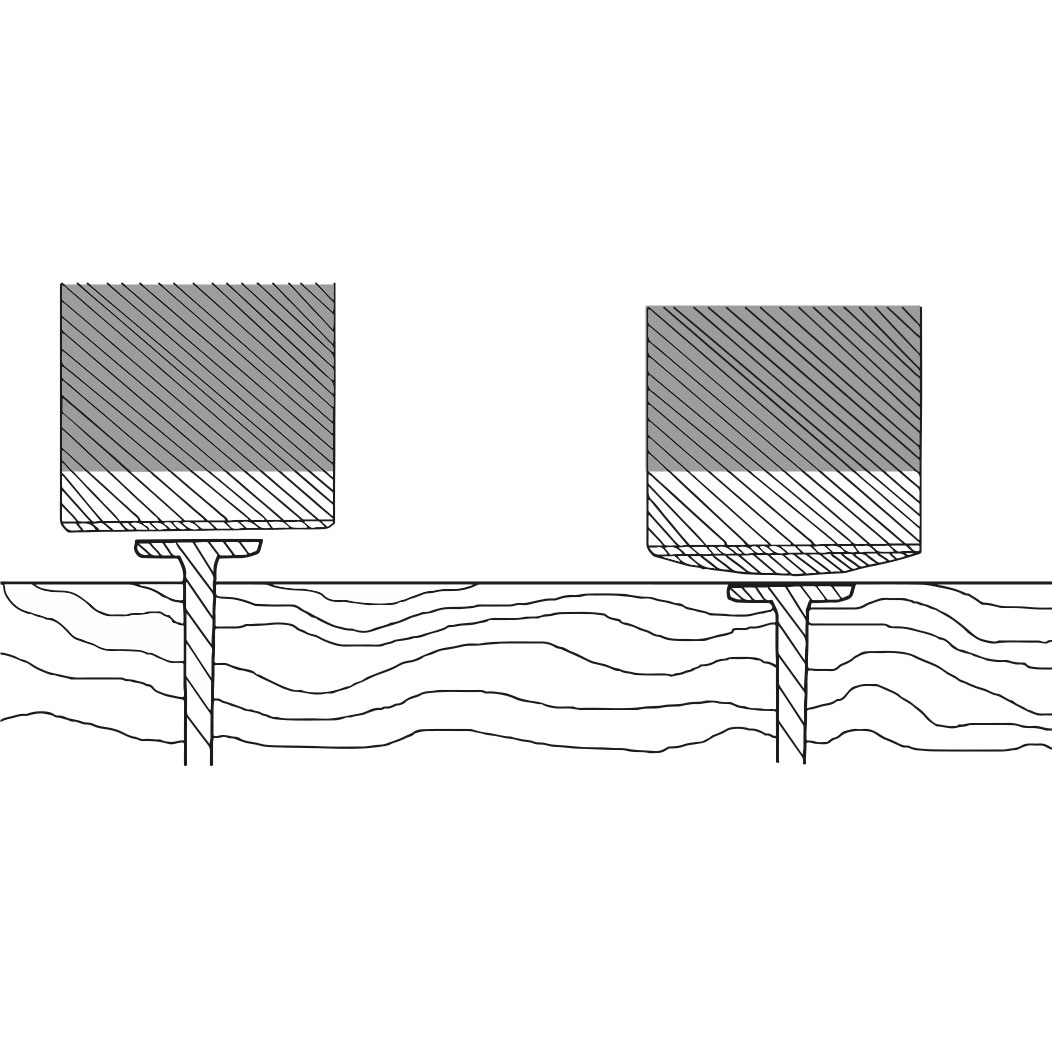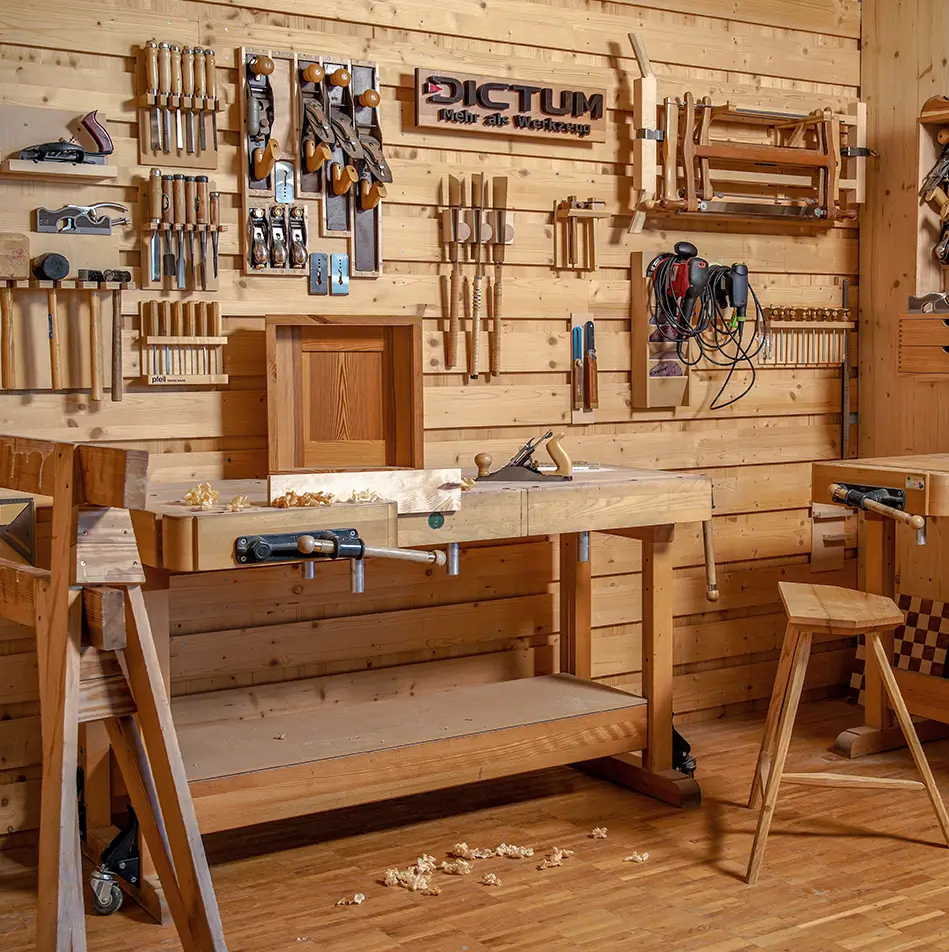

Hammers, nails & pry bars
-
Woodworking / metalworking
- Saws
- Chisels
- Carving tools
- Axes and hatchets
- Hammers, nails & pry bars
- Planes
- Woodturning tools & lathes
- Rasps & files
- Measuring and inspection tools
- Scribing & cutting tools
- Routing & drilling tools
- Clamps
- Screwdriving tools
- Pliers
- Workshop equipment & tool sets
- Blacksmithing / blade finishing
- Engraving tools
- Leatherworking, papercraft & upholstery tools
- Stone working tools
- Tools for kids
Hammers, nails & pry bars
EXPERT KNOWLEDGE HAMMERS / NAILS / CROWBARS
Japanese hammers (Tsuchi)

The simple exterior of the Japanese hammer conceals highly intelligent design features:
The head is soft in the centre and only Hardness at the lanes. The Genno therefore has a rich, cushioned blow without bouncing. While one lane is flat, the opposite lane is slightly convex. This is used for countersinking nails, insertion and assembly work.
Due to its improved efficiency, the Genno is one weight step lighter than the European carpentry hammer. The extra-long handles made of boshu (white oak) are highly resistant to breakage. Natural surfaces and the slim, ergonomic shape contribute to fatigue-free working. Replacement handles are available if required. The head weights are indicated.
Japanese hammers - Types
Estwing and Picard
Wooden hammers and leather hammers
Leather hammers
Leather hammers Nothing can shake those with such thick skin. The heads of these hammers are wound from American buffalo hide. They dampen the impact and protect the surfaces of sensitive workpieces. Ideal for furniture assembly, interior work, restoration, parquet and tile laying. Thanks to their high wear resistance, they can also be used for driving carving and chisels. Ergonomically shaped hickory handles.
Nail iron
It is just as indispensable for the Swedish fire brigade as it is for the carpenter on the building site. The TOVE crowbar has been the epitome of reliability for over 50 years. It is hardened throughout and therefore particularly light in relation to its Size, which the carpenter appreciates in his mobile work. Wide, thinly ground blades at both ends make it easier to apply and protect the workpiece surfaces. Lifetime guarantee.
Pre-punch
Carpenter's tool for pre-punching Length nails. Forged, hardened mandrel with cross brace for hammering out of the wood. Red oak handle.
Hammers - Tips for nailing

When nailing, the high friction generates enormous heat, which can destroy the wood fibres and reduce the strength of the nail joint in the long term. Therefore, use the shortest and thinnest nail permitted for the task at hand.
Drive the nail up to the head with gentle blows using the Flat track of the Genno and then countersink it with a powerful blow using the convex track.
For hardwood, pre-drilling and (or) capping the tip of the nail is recommended to create a cutting effect and break the wood fibres.
Where does the name Genno come from?
An old Japanese legend tells a story about the Genno that we would like to share with you.
In 1385 AD, unexplained deaths occurred in the Tochigi prefecture. A stone called Sesshouseki, which was supposedly possessed by an evil spirit, was responsible for this. This stone killed all living creatures in its vicinity. Birds fell to the ground and people in the area died for no apparent reason.
To put an end to this abomination, a monk named Gennou Shinsho set off for the valley where the stone was located. He attacked the stone with a hammer, which was later named Genno and resembled the current Shape. With one powerful blow, the stone was destroyed and the fragments catapulted into the provinces of Okyayama, Niigata, Hiroshima, Oita and Gunma. Since this legend, the Genno has borne its name.
"The valley in which the stone was located is of volcanic origin, and stones in this area still contain volcanic gases composed of hydrogen sulphide, sulphur dioxide and arsenic."


































